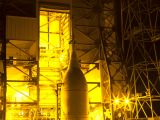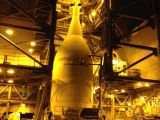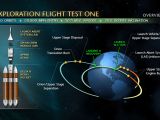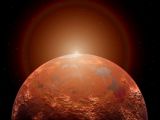Just yesterday, the US National Aeronautics and Space Administration (NASA, for short) announced that its Orion spacecraft, otherwise known as the Orion Multi-Purpose Crew Vehicle, would very soon embark on its maiden voyage.
Thus, the spacecraft is scheduled to perform its first test flight on Thursday, December 4, NASA details in a statement concerning the launch. Should things go according to plan, the spacecraft will spend several hours orbiting Earth.
So, what's the deal with this spacecraft?
This next-generation spacecraft that is expected to complete its first test flight ever about a week and a half from now is especially designed to carry astronauts farther into space than anyone has until now dared to venture.
Thus, NASA expects that the spacecraft will successfully land a crew on the Moon sometime around 2020. By the year 2025, Orion is to transport astronauts to an asteroid, and come 2030, the spacecraft should carry astronauts all the way to Mars.
The fact that it is designed to take a crew of up to four people deep into space and sustain them while en route to the Moon or even Mars makes NASA's Orion spacecraft one of the most impressive exploration vehicles ever proposed and built.
The details of Orion's first test flight
As mentioned, the Orion spacecraft is scheduled to complete its first test flight this coming December 4. As detailed by NASA, the spacecraft will launch at 7:05 a.m. EST on a United Launch Alliance Delta IV Heavy rocket.
The launch site is the Space Launch Complex 37 at Cape Canaveral Air Force Station in Florida. Having reached space, Orion will take 4.5 hours to orbit our planet twice. During this time, it will travel at an altitude of 3,600 miles (some 5,800 kilometers).
In a video detailing the ins and outs of this test flight, NASA explains that this unmanned journey will make it possible for the scientists working on this project to assess the spacecraft's resilience when it comes to handling the harsh condition of space travel.
“The Orion Flight Test will evaluate launch and high speed re-entry systems such as avionics, attitude control, parachutes and the heat shield,” the Administration writes in a statement.
Once its trip through space is completed, Orion will head back to Earth. The spacecraft is expected to enter our planet's atmosphere at a speed of about 20,000 miles per hour (nearly 32,200 kilometers per hour), and with the help of its parachute system, it will land in the Pacific Ocean.
Check out the video below to learn more about the Orion spacecraft's upcoming flight test and keep an eye on this page for more details on this ambitious NASA project.
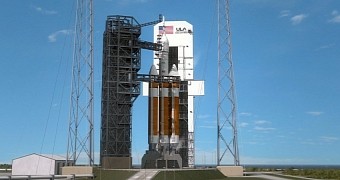
 14 DAY TRIAL //
14 DAY TRIAL // 

